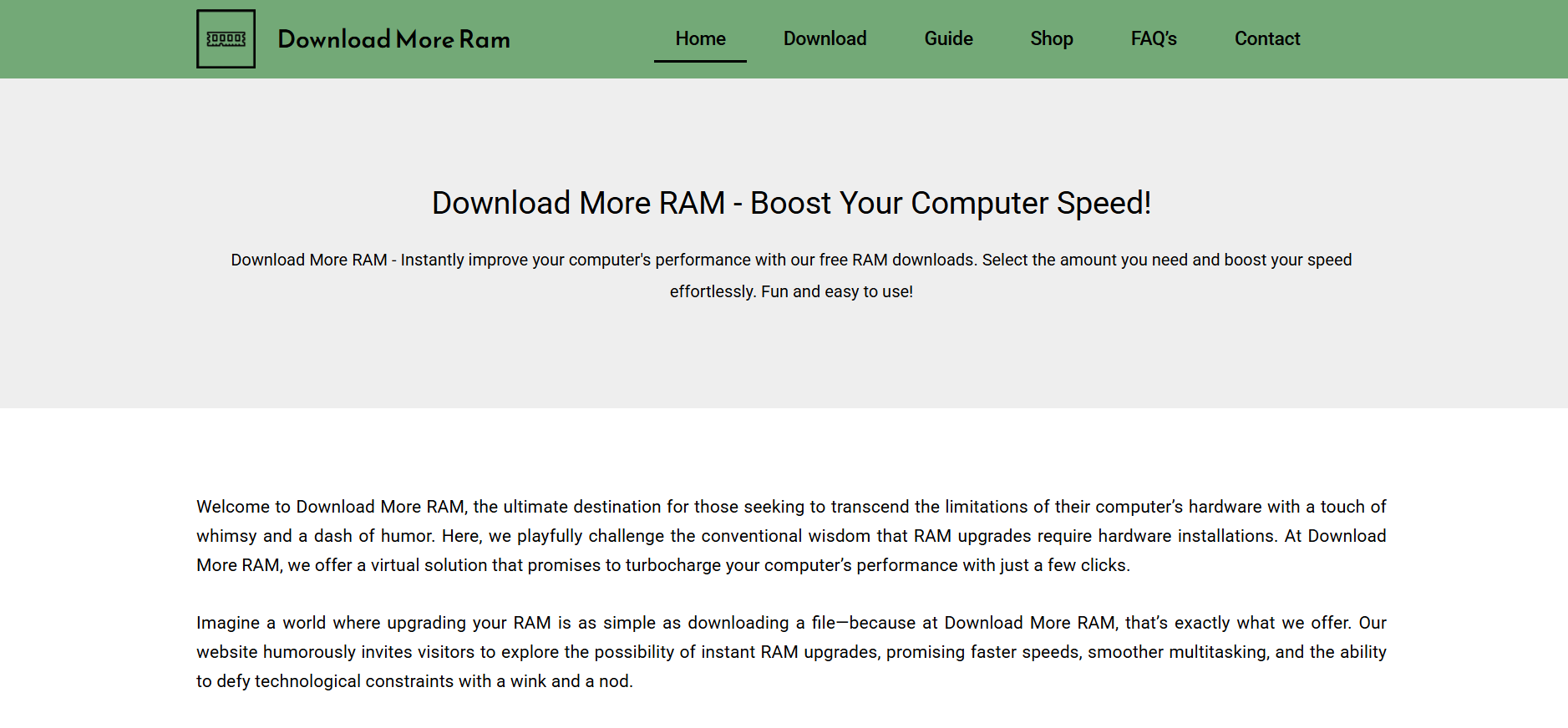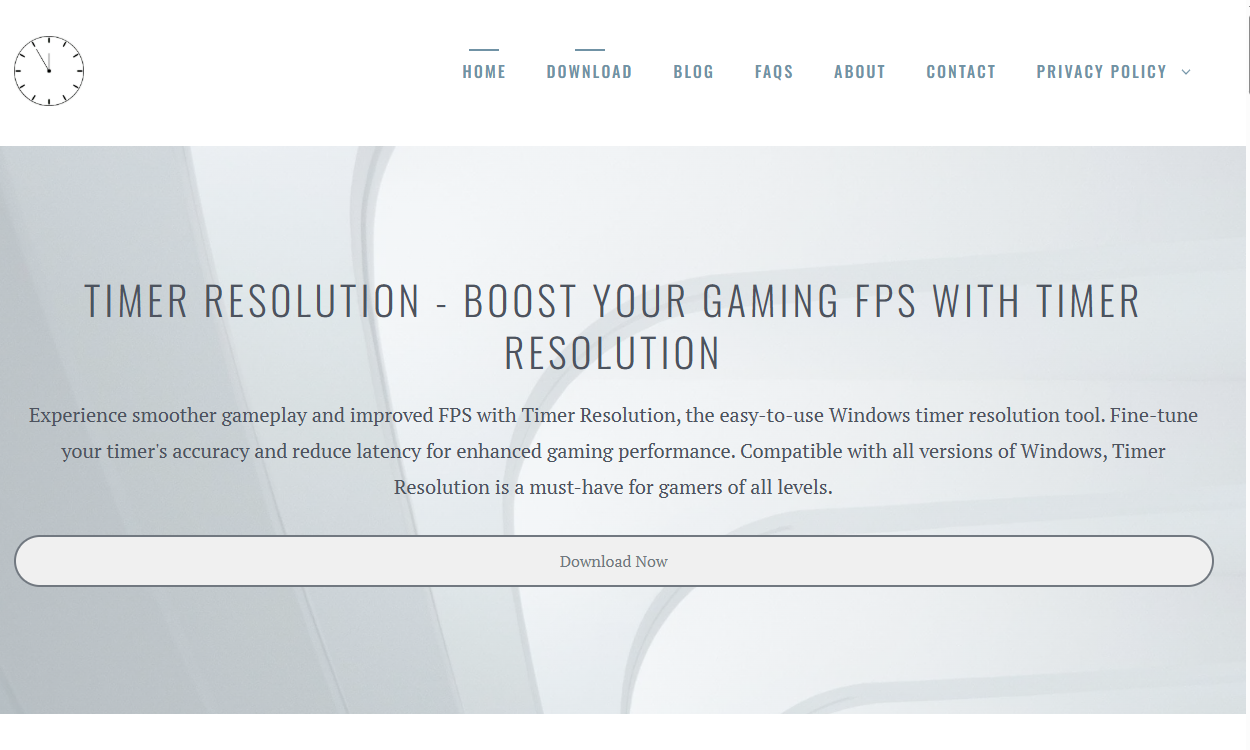Does This Site Truly Boost RAM Without Hardware?

RAM is the heartbeat of your computer. Whether you’re gaming, editing videos, opening dozens of browser tabs, or running heavy software, having enough RAM ensures your system doesn’t lag, freeze, or crash. So when you come across a website claiming to Download More RAM with just a click—no hardware, no tools—it’s tempting. Too good to be true? Maybe. But also maybe not.
Let’s dive into what these sites are really offering, what’s technically possible, and whether they can actually improve your computer’s performance without you opening up your case or reaching for your wallet.
Understanding RAM and Why It Matters
RAM, short for Random Access Memory, is where your system stores temporary data it needs quick access to. Unlike your hard drive, RAM is lightning-fast. When it runs low, everything slows down—apps become unresponsive, loading times increase, and multitasking becomes painful.
Most users want more RAM to solve common issues:
- Programs take too long to launch
- Games stutter or crash
- Browser tabs reload frequently
- Video editing lags
- System freezes during multitasking
Traditionally, the only solution was buying and physically installing more RAM sticks. But now, websites like Download More RAM are claiming to offer performance boosts online. Let’s unpack that.
Breaking Down the Promise
Sites promising to “Download More RAM” aren’t actually installing new physical memory into your computer. That would violate the laws of physics and hardware design. Instead, they often take one of three approaches:
- Optimize existing memory allocation
- Clear background processes
- Use software tricks to free up RAM
Some even gamify the experience, giving you a “slider” to pick how much RAM you want to download. It looks fun, but what’s really going on under the hood?
How Software-Based RAM Optimization Works
Instead of installing new hardware, these tools aim to improve how your system uses existing RAM.
Clearing Memory Hoggers
Many background apps—think update services, startup bloatware, or inactive browser tabs—can silently drain memory. These sites or their downloadable utilities often scan for these processes and either pause or terminate them to free up RAM.
Managing Cache and Virtual Memory
Your operating system uses a page file (virtual memory) on your hard drive when RAM runs out. Some tools adjust how your OS handles this cache, effectively simulating more available memory. While not as fast as real RAM, it can help during peak usage.
Memory Defragmentation
Some optimizers “defrag” memory usage by consolidating free RAM blocks, making space more usable for heavy apps. This is more noticeable on older systems or ones with minimal RAM installed.
Marketing Gimmick or Real Utility?
It depends on what you expect. If you think you’re installing actual new memory modules via your browser, then no—it’s a gimmick. RAM is physical hardware; it can’t be downloaded.
But if you’re looking for a temporary performance boost, some sites genuinely provide lightweight utilities that can help:
- Reduce RAM usage by closing background tasks
- Free up cache space
- Improve multitasking responsiveness
So while you aren’t technically “downloading” RAM, you’re optimizing what you have.
What These Sites Actually Do
Let’s take a hypothetical walk-through of one of these sites, such as DownloadMoreRAM.com.
Step-by-Step User Journey
Visit the Site:
You land on a clean, humorous-looking page offering a RAM “download” slider. You select “16GB” and click download.
Download Triggered:
One of two things happens:
- You’re taken to a joke page acknowledging it’s a parody.
- You’re offered a real RAM optimization tool to install.
Installation:
If it’s legit, the app might monitor background activity, clean RAM usage, or change Windows settings for better memory handling.
Performance Test:
You might notice snappier response when switching between programs or gaming—but only temporarily. It doesn’t replace actual memory upgrades for demanding workloads.
Legal and Security Concerns
Always approach these websites with caution.
Malware Risk
Many fake RAM download sites are scams that can infect your system with:
- Adware
- Spyware
- Ransomware
- Keyloggers
Never download from an unknown or unverified source.
Data Privacy
Even if the utility seems safe, it might collect system data without your consent. Read privacy policies before installation.
System Instability
Aggressive memory cleaning apps can interfere with system processes, leading to crashes or corrupted files.
Only download from trusted, well-reviewed sources.
When RAM Optimization Makes Sense
On older or lower-end machines, optimizing existing memory can be a lifesaver.
Use-cases where it helps:
- PCs with 2–4GB of RAM
- Budget laptops
- School or office machines not intended for gaming
- Systems bloated with startup programs
In such cases, a lightweight RAM booster might clear just enough room to run Zoom, Excel, and Chrome without freezing.
When It’s Time to Upgrade
For modern tasks—gaming, streaming, rendering—software optimization only goes so far. If you:
- Have under 8GB RAM
- Use programs like Photoshop, After Effects, Premiere Pro, or Unity
- Run multiple virtual machines or servers
- Edit 4K+ video regularly
Then a physical RAM upgrade is the only long-term solution.
Real Alternatives to RAM Download Sites
If you’re not ready to open your wallet, here are legit ways to stretch your RAM:
Use Windows’ Built-in Tools
- Task Manager → End unused tasks
- System Configuration → Disable startup apps
- ReadyBoost → Use a USB drive as extra cache
Use Lightweight Apps
Try RAMMap, CleanMem, or Wise Memory Optimizer—they clean memory and show you which processes eat up space.
Virtual Memory Tuning
Manually increase your paging file size in Windows for better performance when RAM is maxed.
Why the Meme Lives On
Download More RAM started as a tech joke around 2004. It poked fun at non-tech-savvy users who thought they could fix slow computers like installing apps.
But even today, the phrase is used by:
- Tech YouTubers in satirical videos
- Redditors as sarcasm in support threads
- Memers mocking fake tech solutions
Still, the idea stuck—and now, some developers use the meme to market legit optimization tools cleverly.
Final Verdict
No, because RAM is physical hardware. You can’t click a button and get more of it magically installed.
Yes, because optimizing memory use can free up resources, making your system behave like it has more RAM, especially if it’s overloaded with bloat.




